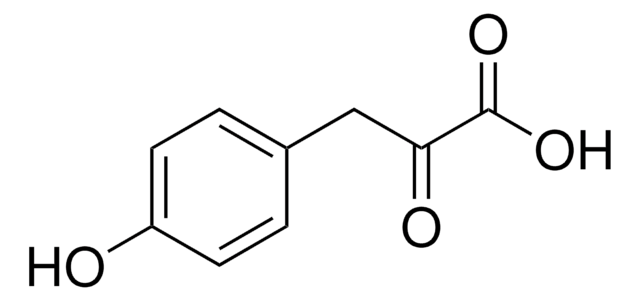SMB00940
3-Hydroxyhippuric acid
≥95% (NMR)
Synonym(e):
3-Hydroxyhippuric acid, (3-Hydroxybenzamido)acetic acid, (3-Hydroxybenzoylamino)acetic acid, 3-Hydroxybenzoylglycine, N-(3-Hydroxybenzoyl)glycine
About This Item
Empfohlene Produkte
Qualitätsniveau
Assay
≥95% (NMR)
Form
solid
Farbe
white to pale yellow
Lagertemp.
2-8°C
SMILES String
OC(=O)CNC(=O)C1=CC=CC(O)=C1
InChI
1S/C9H9NO4/c11-7-3-1-2-6(4-7)9(14)10-5-8(12)13/h1-4,11H,5H2,(H,10,14)(H,12,13)
InChIKey
XDOFWFNMYJRHEW-UHFFFAOYSA-N
Allgemeine Beschreibung
Anwendung
Leistungsmerkmale und Vorteile
- Can be used in Metabolomics and Biochemical research
- High-quality compound suitable for multiple research applications
Sonstige Hinweise
Lagerklassenschlüssel
11 - Combustible Solids
WGK
WGK 3
Flammpunkt (°F)
Not applicable
Flammpunkt (°C)
Not applicable
Hier finden Sie alle aktuellen Versionen:
Analysenzertifikate (COA)
Die passende Version wird nicht angezeigt?
Wenn Sie eine bestimmte Version benötigen, können Sie anhand der Lot- oder Chargennummer nach einem spezifischen Zertifikat suchen.
Besitzen Sie dieses Produkt bereits?
In der Dokumentenbibliothek finden Sie die Dokumentation zu den Produkten, die Sie kürzlich erworben haben.
Unser Team von Wissenschaftlern verfügt über Erfahrung in allen Forschungsbereichen einschließlich Life Science, Materialwissenschaften, chemischer Synthese, Chromatographie, Analytik und vielen mehr..
Setzen Sie sich mit dem technischen Dienst in Verbindung.